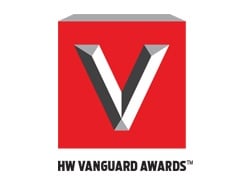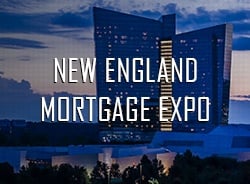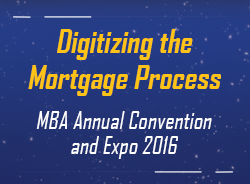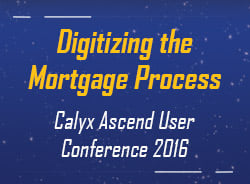Dominic Iannitti Honored with HousingWire's 2016 Vanguard Award for Major Industry Contributions
 DocMagic, Inc. is proud to announce that president and CEO, Dominic Iannitti, was honored by HousingWire with its 2016 Vanguard Award, which recognizes top mortgage executives for professional accomplishments and for their positive impact on the industry at-large.
DocMagic, Inc. is proud to announce that president and CEO, Dominic Iannitti, was honored by HousingWire with its 2016 Vanguard Award, which recognizes top mortgage executives for professional accomplishments and for their positive impact on the industry at-large.The Vanguard Award list is limited to business unit executives within the housing and mortgage finance spheres, specifically those who stand out as innovators and trailblazers. The bar is set extremely high, so all Vanguard nominees represent the highest caliber and demonstrate substantial industry influence.
“The HW Vanguards continues to impress going into its second year; the winners are second-to-none and this list represents the finest cross section of mortgage talent available,” said Jacob Gaffney, HousingWire editor-in-chief.
This was a momentous year for Iannitti. 2016 saw the launch of two industry-altering platforms at DocMagic, and Iannitti’s role at the helm of those projects no doubt earned him a spot on the Vanguard list.
In the first half of the year, Iannitti led the charge in rolling out SmartCLOSE™, DocMagic’s award-winning collaborative closing portal, a solution for TRID compliance that brings lenders, settlement service providers, and other relevant parties together in a secure environment to share, edit, validate, audit, track, and collaborate on documents, data, and fees. Since its launch, SmartCLOSE has gained rapid industry adoption, proving it to be a true game-changer in loan closing today.
Following the launch of SmartCLOSE™, Iannitti shifted his focus to DocMagic’s single-source Total eClose™ solution, where he once again played an integral role in the project’s conception and development for the marketplace. The Total eClose™ suite contains all of the components needed to facilitate a completely paperless digital closing — from start to finish.
By October of 2016, DocMagic completed the mortgage industry’s first comprehensive eClosing for radius financial group, inc. The eClosing included both lender and closing/settlement agent documentation, eNotarization, eWarehousing and eNote acceptance. Unlike other so-called eClosing solutions (often merely hybrids which still require that certain documents be papered out), DocMagic’s centralized Total eClose™ platform facilitates a truly paperless digital closing, an industry milestone that cannot be underestimated.
“I am very honored and humbled to have been selected by HousingWire’s editorial board to appear on this list of esteemed mortgage executives,” commented Dominic Iannitti, president and CEO of DocMagic. “This award is absolutely the result of our continual technology innovations and the unwavering commitment and enthusiasm of the exceptional team at DocMagic.”

 Join the eClosing evolution!
Join the eClosing evolution!

 Press Release:
Press Release: By Brian Hornea
By Brian Hornea The DocMagic team was thrilled to be a part of Pediatric Therapy Network's (PTN) Halloween celebration this year. PTN invited its corporate sponsors to donate treats for the children and even gave DocMagic the opportunity to participate in the festivities as well! Anula Mohan and Mike Zarrilli attended the event on behalf of DocMagic and were given their very own station in the costume parade to distribute toys and treats (and high fives) to the halloween-clad children.
The DocMagic team was thrilled to be a part of Pediatric Therapy Network's (PTN) Halloween celebration this year. PTN invited its corporate sponsors to donate treats for the children and even gave DocMagic the opportunity to participate in the festivities as well! Anula Mohan and Mike Zarrilli attended the event on behalf of DocMagic and were given their very own station in the costume parade to distribute toys and treats (and high fives) to the halloween-clad children.  We're excited to attend the upcoming
We're excited to attend the upcoming 

 Press Release:
Press Release: